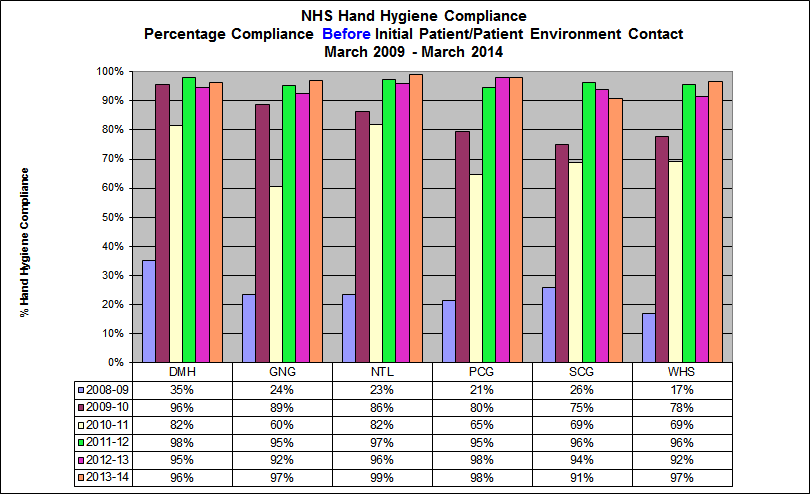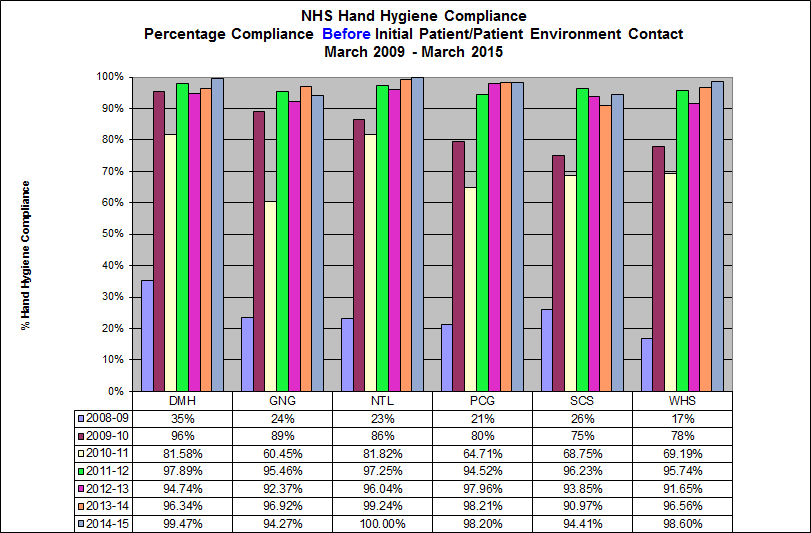Hand Hygiene
Share This Page
Share This Page
Good hand hygiene results in better, safer care, and it is a necessity for anyone in the hospital environment, particularly for those who come into contact with patients.
Click on the links below to learn more about our Quality & Safety Indicators.
Tips for cleaning hands properly:
Research indicates that hand hygiene reduces the risk of healthcare-associated infections, hospital stays and readmissions. Hand hygiene is the cornerstone of our infection prevention and control efforts. Niagara Health’s increased efforts in promoting proper hand hygiene have resulted in a significant rise in the number of healthcare providers and support staff cleaning their hands before and after every patient contact.
Niagara Health has held educational sessions, increased hand-washing signage containing tips, and encouraged discussions among staff on how to improve hand hygiene. Additional alcohol hand dispensers for use by staff and the public were installed across all sites that are within an arm’s reach of patient beds and in key areas in hallways, meeting rooms and other high-traffic areas.
The first hand hygiene quarterly audit was conducted in March 2009 at all sites and on all units during various shifts. All healthcare professionals and support staff who come into contact with patients are audited. The increased focus on hand hygiene will continue to be a priority to sustain this success.
Good hand hygiene is one of the best ways to prevent the spread of many infections. Please use the alcohol hand-rub that is widely available through dispensers in key areas across our sites frequently and use soap and water when hands are visibly soiled. Encourage colleagues, patients and visitors to follow safe hand hygiene practices, too.
Percentage Compliance Before Patient/ Patient Environment Contact

MoHLTC Hand Hygiene Observation Tool and internal audit information. Audit process is applied to all inpatient nursing units, covering all shifts and all days of the week. Each audit observation period is 20 minutes in length.
Quarterly. Publicly reported annually
Hand hygiene relates to the removal of visible soil and the removal or killing of microorganisms from the hands and may be accomplished using soap and running water or an alcohol-based hand rub.
Hand hygiene compliance rates are a percentage for time periods identified by the Ministry of Health and Long-Term Care, using the following formula:
These percentages also reflect:
(i) Hand hygiene before initial patient/patient environment contact by combined health care provider type (e.g., nurses, allied health professionals, physicians, etc.)
(ii) Hand hygiene after patient/patient environment contact by combined health care provider type (e.g., nurses, allied health professionals, physicians, etc.)
Hospitals are to collect at least 200 observations for every 100 inpatient beds. To ensure statistically valid data for smaller hospitals, such as Niagara on the Lake Site, a minimum of 50 observed opportunities for hand hygiene are to be collected. NH was required to conduct 1,600 audits based on its 790 beds and actually conducted 2,036 audits in 2008-09 and 2,256 audits in 2009-10 to ensure statistical validity.
The goal of public reporting hand hygiene compliance is to achieve an overall assessment of whether compliance rates are improving. It is normal for rates to vary from hospital to hospital.
Percentage Compliance After Patient/ Patient Environment Contact

MoHLTC Hand Hygiene Observation Tool and internal audit information. Audit process is applied to all inpatient nursing units, covering all shifts and all days of the week. Each audit observation period is 20 minutes in length.
Quarterly. Publicly reported annually
Hand hygiene relates to the removal of visible soil and the removal or killing of microorganisms from the hands and may be accomplished using soap and running water or an alcohol-based hand rub.
Hand hygiene compliance rates are a percentage for time periods identified by the Ministry of Health and Long-Term Care, using the following formula:
